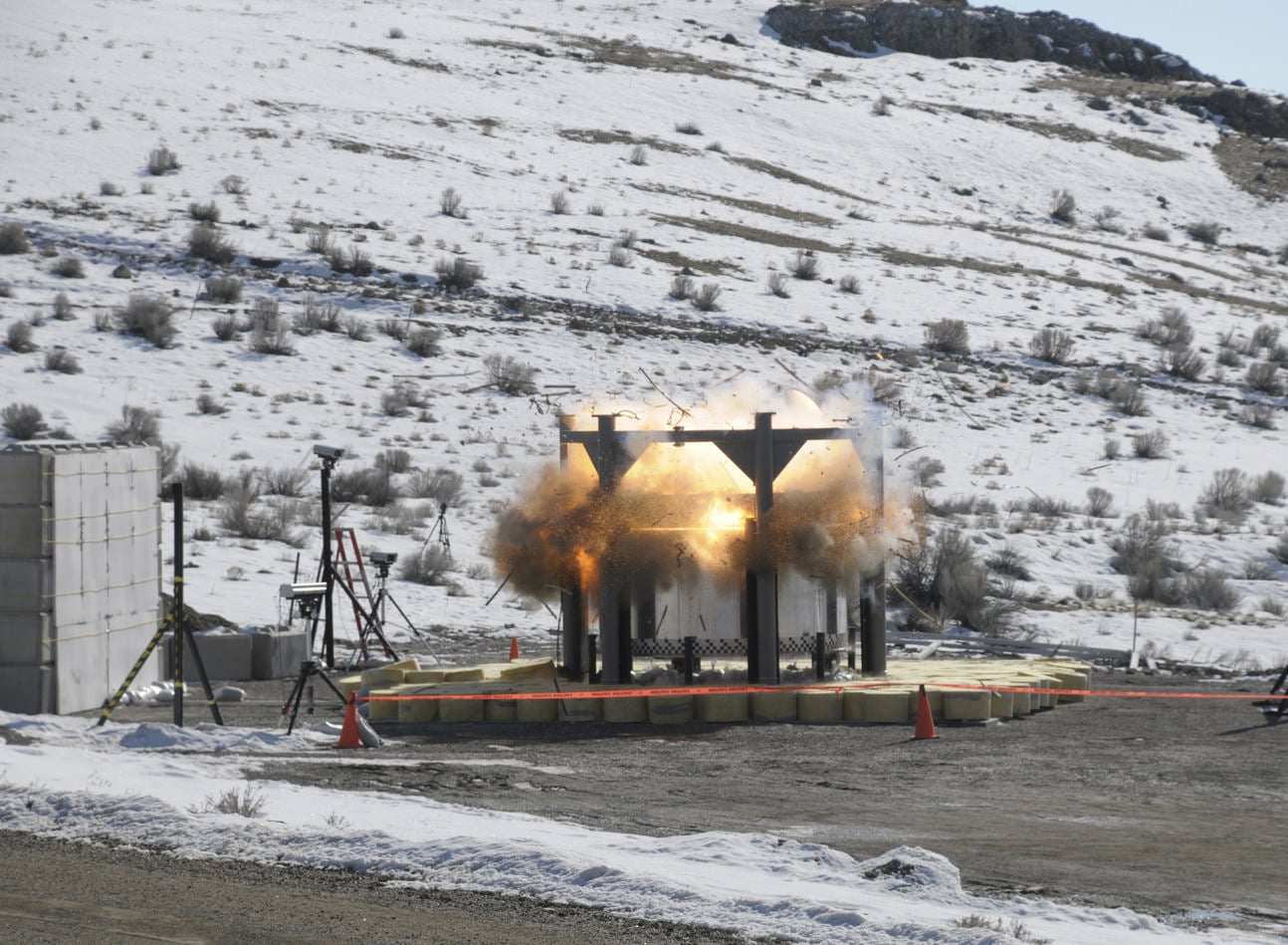[/caption]
The successful test of NASA's Ares I-X Forward Skirt Extension on Thursday represents a "major milestone" in the development of the launch system, according to Alliant Techsystems (ATK). The "skirt extension" in question is a solid ring of aluminium (or
aluminum
) connecting the first stage with the upper stages of the rocket.
This summer, the first flight of the Constellation Program is scheduled to blast off from a Cape Canaveral launch pad. The ATK pyrotechnics deep in the Utah Desert has proven to NASA that a key portion of this test flight will go as planned, allowing the reusable portion of the Ares I to return to Earth for recovery...
To say 2008 was a turbulent year for the Constellation program is an understatement. Although there have been a number of successful tests (including the test firing of the
jettison motor
,
launch abort system
and
an old Shuttle engine
; plus
parachute tests
),
political tensions
,
criticism of the technology
and
budget uncertainty
have all taken their toll. The future of the Constellation Program is in doubt (or shaky at best) and there's not many media headlines with anything positive to say. So, when there is a successful test of
any
Ares component, it is certainly worth reporting, in an attempt to redress the good-news/bad-news balance and give credit where credit is due.
[caption id="attachment_24429" align="alignleft" width="250" caption="Artist impression of the Ares I-X at the launchpad, plus labelled sections of the rocket (NASA)"]
[/caption]So, last week, ATK successfully tested the explosive charges that will perform the most important task of the test launch of the Ares I-X. The Forward Skirt Extension is located between the first and second stages of the rocket (pictured left). This 1.8 metre (6 ft) long by 3.7 metre (12 ft) diameter aluminium cylinder will allow the first stage booster to separate at the frustum (a cone-shaped connector that attaches the first stage to the larger diameter upper stage). During the launch, separation will occur at an altitude of around 40 km (130,000 ft).
This section will also be important as it will need to store the recovery parachutes for the first stage and it will need to support the mass of the upper stages (plus payload) during launch. It is for this reason that the skirt is forged from one solid lump of aluminium and reinforced with a unique internal support structure, housing three main parachutes.
Data from the charge detonation will be used to measure the shock generated, understanding how this might affect the Ares I-X mission and future Ares I launches. Thursday's test appears to have achieved this as well as severing the forward skirt extension.
Roll on summer, I'm looking forward to seeing the Ares X-I first stage parachute to Earth
...
Source:
NASA
 Universe Today
Universe Today
